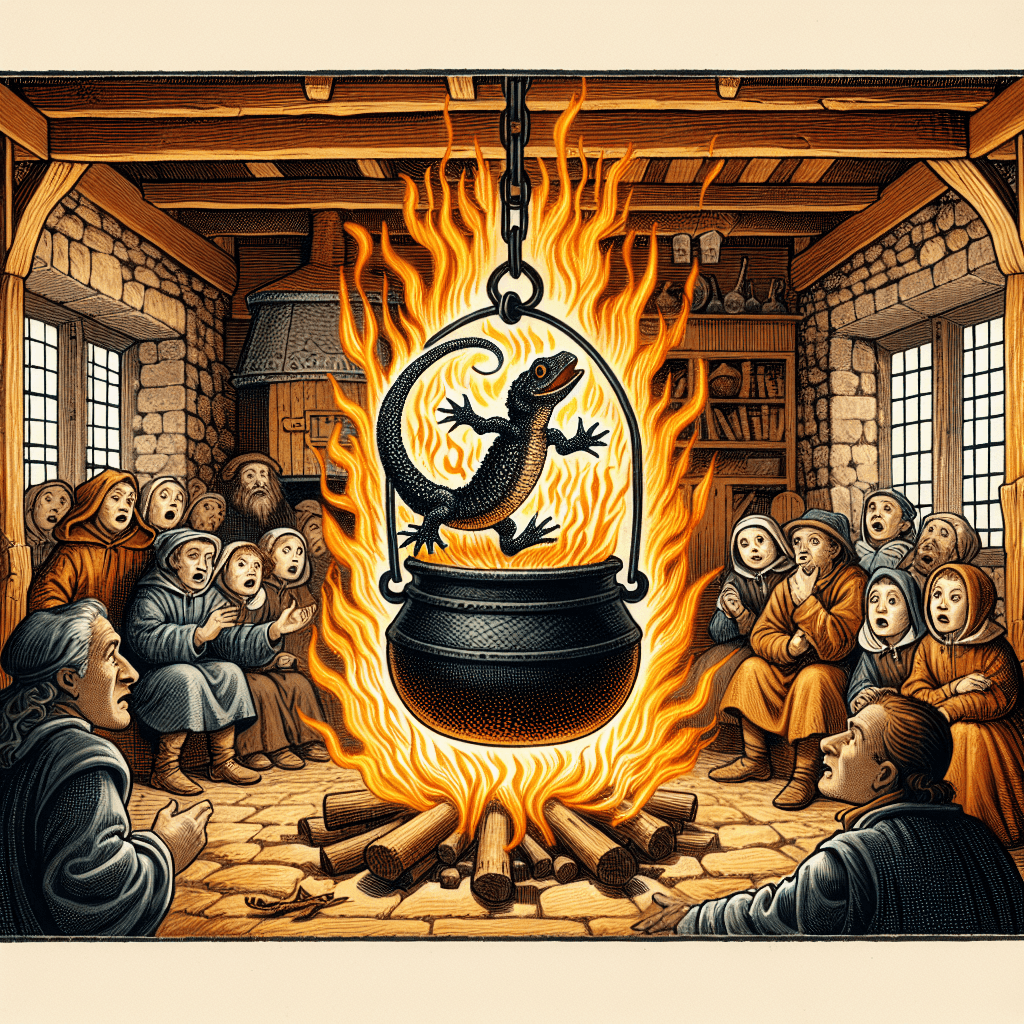Why did people once believe salamanders were born from and could survive in fire
Discover the simple, real-world observation that convinced brilliant minds from Aristotle to Leonardo da Vinci that these small amphibians were literally born from fire.


Too Long; Didn't Read
TLDR: People saw salamanders crawling out of logs thrown onto a fire and mistakenly believed they were born from the flames. In reality, the amphibians were just hibernating in the cool, damp wood and were desperately trying to escape the heat.
Forged in Flame: Why Did People Once Believe Salamanders Were Born From and Could Survive in Fire?
Imagine tending a crackling hearth on a cold night. You toss a large, damp log onto the flames, and suddenly, a small lizard-like creature scurries out from the blaze, seemingly unharmed. To an ancient observer, the conclusion would seem obvious: this animal must be born from the fire itself. This powerful image fueled a myth that persisted for nearly two thousand years, capturing the imaginations of philosophers, alchemists, and kings. But why did this belief take such a firm hold? This post delves into the fascinating origins of the fire salamander myth, exploring how simple observation, influential writings, and the creature's own biology created an enduring legend.
From Ancient Logs to Fiery Legends
The foundation of the salamander myth lies not in magic, but in a simple misunderstanding of the animal's behavior. Salamanders are amphibians, not reptiles, and they thrive in cool, damp environments. Their permeable skin requires moisture, so they often make their homes in the dark, wet interiors of rotting logs and under piles of damp leaves.
In ancient and medieval times, these same logs were a primary source of firewood. When people brought this wood indoors and eventually tossed it into a fireplace, they inadvertently created a dramatic scene. As the log heated up, the hidden salamander would be forced to flee the intense heat and smoke, scurrying out from the flames. To someone who had no idea the creature was already inside the wood, it appeared as if the salamander was spontaneously generated by the fire. This repeated, startling occurrence was the observational spark that ignited a long-lasting myth.
When Philosophers Fanned the Flames
What began as folk observation was soon cemented into fact by some of antiquity's most respected thinkers. The Greek philosopher Aristotle noted the belief that salamanders could extinguish fires. However, it was the Roman scholar Pliny the Elder who truly codified the legend in the first century AD. In his highly influential work, Naturalis Historia (Natural History), Pliny wrote that the salamander is "so cold that it puts out fire by its contact, in the same way that ice does."
Because Pliny's work was treated as a definitive scientific encyclopedia for centuries, his claims were rarely questioned. His authority transformed a simple misinterpretation into established scholarly fact, ensuring the myth was passed down through generations.
The Slippery 'Proof': A Creature's Natural Defense
The belief was further bolstered by the salamander’s unique biology. When threatened or stressed—such as when being roasted alive—many salamander species excrete a milky, often toxic, fluid from glands in their skin. This moist secretion would have had two effects on a fire:
- A Momentary Sizzle: The moisture could temporarily dampen the flames directly in the salamander's path as it made its frantic escape. This could be interpreted as the creature "extinguishing" the fire.
- Protective Barrier: The slick coating offered a brief, and ultimately futile, layer of protection against the heat, perhaps allowing it to scurry a little further than another creature its size might have.
This natural defense mechanism, intended to make the salamander unpalatable to predators, served as perceived "proof" of its legendary fire-resistant properties.
A Symbol of Purity and Resilience
Over time, the myth evolved from a natural history curiosity into a powerful symbol in art, alchemy, and religion. For alchemists, the salamander became the embodiment of the element of fire. In Christian iconography, it represented the righteous believer who could pass through the "fires of temptation" unscathed, emerging pure and faithful. Even Leonardo da Vinci perpetuated the myth, writing that the creature "gets no food but from the fire, in which it constantly renews its scaly skin." The legend became so potent that King Francis I of France adopted the salamander in flames as his royal emblem, symbolizing his power to endure and overcome adversity.
Conclusion
The enduring myth of the fire salamander is a perfect case study in how folklore is born. It began with a logical, yet incorrect, conclusion drawn from observing a natural behavior—a salamander fleeing a burning log. This idea was then canonized by respected ancient authorities like Pliny the Elder, seemingly confirmed by the creature’s own biological defenses, and finally elevated into a powerful cultural symbol. While we now understand that these amphibians are creatures of damp earth, not scorching fire, their legendary connection to the flames remains a fascinating testament to humanity's quest to explain the mysterious world around us.


